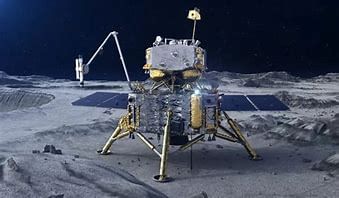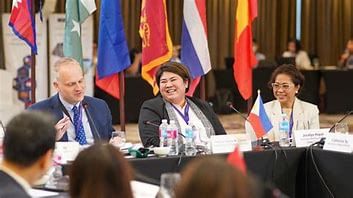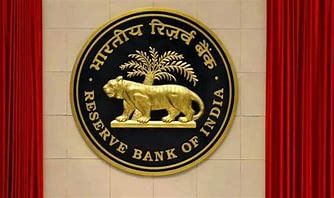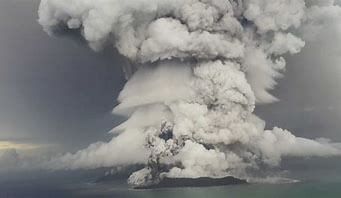UPSC Daily Current Affairs - 4th June 2024 | Current Affairs & Hindu Analysis: Daily, Weekly & Monthly PDF Download
GS3/Science and Technology
CHANG'E-6 CRAFT
Source: Financial Express

Why in news?
China successfully landed an uncrewed spacecraft on the far side of the moon, marking a significant achievement in its endeavor to retrieve the world’s first rock and soil samples from the dark lunar hemisphere.
- This mission enhances China’s position in space exploration as various countries, such as the United States, aim to exploit lunar resources for sustainable astronaut missions and establishing moon bases in the near future.
About CHANG’E-6 CRAFT
- The Chang’e-6 mission is part of China’s lunar exploration program, named after a Chinese moon goddess. It follows the Chang’e 5 mission, which successfully brought back samples from the near side of the moon in 2020.
- In 2020, Chang’e-5 collected 1.7kg of material from the Oceanus Procellarum region on the Moon’s near side.
- The current Chang’e-6 mission was launched on May 3, 2024, and the lander touched down on the lunar far side on June 1, 2024, specifically in the South Pole-Aitken Basin.
- During this mission, the lander will utilize a mechanical arm and a drill to collect up to 2 kilograms of surface and underground material over a period of about two days.
- An ascender located on top of the lander will then transport the samples in a metal vacuum container to another module orbiting the moon. Subsequently, the container will be transferred to a re-entry capsule scheduled to return to Earth in China’s Inner Mongolia region around June 25.
- Missions to the moon’s far side are more challenging due to the lack of direct communication with Earth, necessitating a relay satellite for transmission. Additionally, the terrain is rougher, offering fewer flat surfaces for landing.
- This mission will provide a unique opportunity to compare the unexplored far side of the moon with the extensively studied Earth-facing side. The South Pole-Aitken Basin, where the landing occurred, is one of the largest impact craters in the solar system.
- China has now achieved the feat of landing on the moon’s far side twice, with the previous instance being the successful Chang’e-4 mission in 2019.
GS2/Polity
JUDICIAL PENDENCY
Source: Indian Express

Why in News?
The article explores the debate surrounding the work hours of judges and the issue of pending cases in India’s judicial system. It highlights the misconception that longer court sessions and reduced vacations for judges would significantly alleviate the backlog of cases.
According to the India Justice Report, as of June 2020, a case remained pending in subordinate courts for three years and in high courts for five years on average.
What is the current status of judicial vacancies in India?
No state has filled its complete quota of judges, whether in the high courts or the numerous lower courts. On average, high courts have a vacancy rate of 30%, but it can reach nearly 50%. Subordinate courts have an average vacancy rate of 22%. However, Bihar and Meghalaya have vacancy rates exceeding 30%, persisting for over three years.
What are the factors that lead to high judicial pendency?
1) Lack of Judges– India has only 15 judges per 10 lakh population, far below the Law Commission’s 1987 recommendation of 50 judges per 10 lakh population.
2) Lack of Basic Infrastructure– There’s a shortage of courtrooms, and many existing ones aren’t ideal. Nationally, there’s a lack of support staff, averaging 26%.
3) Legal Expertise and Ineffective Communication-Varying levels of skill and knowledge among both lawyers and judges result in continuous procedural delays. Additionally, when there’s a mismatch in language skills, clarity of arguments, and final decisions, it increases the number of appeals.
4) Lack of Legal Ethics and Culture-A culture within the legal profession that is permissive and potentially collusive enables the proliferation of unfounded applications, continuous adjournments, and meritless appeals. Lawyers employ tactics to deliberately prolong the trials.
5) Obstacles to Technological Integration in Court- Adoption of technology in courts is hindered by inconsistent access to electricity, uneven internet bandwidth, and resistance from users.
6) Challenges in Judicial Reform Initiatives -Efforts such as mandatory mediation, Lok Adalats, specialized courts, and prioritizing specific cases have been implemented. However, they face similar structural deficiencies.
What should be the way forward?
Solutions require collaboration between state and central governments. A few solutions are as follows-
1) Government litigation currently constitutes approximately 50% of the caseload in courts. Thus, steps are needed to rationalize and trim this.
2) There is a need to evaluate the potential financial and time consequences of every newly introduced legislation at the pre-legislative stage, and they should be put in the public domain. This may result in better-crafted legislation and reduce the unnecessary burden on the courts.
3) Obsolete laws and procedures should be revised or removed to decrease the number of legal cases.
4) There is a need to appoint long-term court managers who can relieve judges of many routine tasks and help in designing systems for maximum efficiency.
5) There is a compelling need to establish more rigorous criteria at the initial stage before individuals are appointed as judges, irrespective of whether it is for higher or lower courts.
6) The India Justice Report estimates that the overall per capita spending on judiciary stands at less than Rs 150.Thus, the government should enhance budgetary allocation to improve the access and quality of justice delivery.
GS2/International Relations
Elections in the European Parliament
Source: MSN

Why in news?
The 2024 European Parliament election is scheduled to be held from 6 to 9 June. This will be the tenth parliamentary election since the first direct elections in 1979, and the first European Parliament election after Brexit. What's in Today's Article?
About European Parliament (Basics, Functions, etc.)
- The European Parliament (EP) is a legislative body of the European Union and one of its seven institutions.
- It adopts European legislation together with the Council of the European Union.
- Functions include negotiating EU laws with member state governments, approving EU budget, voting on international agreements, and enlargements of the bloc.
- Represents the second-largest democratic electorate globally, with 373 million citizens across 27 member states.
Elections in the European Parliament
- The Parliament has been directly elected every five years by EU citizens through universal suffrage.
- Composed of 705 members (MEPs), set to rise to 720 after the June 2024 European elections.
- Key steps in the election process include proportional representation, voting by registered EU citizens, and party lists of candidates.
- MEPs form political groups based on political affiliations after elections.
Allocation of Seats
- The number of MEPs each country elects is roughly proportional to its population.
- Smaller countries are slightly over-represented to ensure balanced representation.
Voting Process
- Voters can choose closed lists or individual candidates in some member states.
- Electors abroad may vote at embassies, via mail, or electronically based on national laws.
Counting Votes
- Votes are counted in each member state, and seats are allocated to parties based on vote shares.
Formation of Political Groups
- MEPs form political groups based on political affiliations post-election.
- These groups play a significant role in the legislative process.
GS3/Science and Technology
JAMES WEBB SPACE TELESCOPE SPOTS EARLIEST-KNOWN GALAXY
Source: Indian Express

Why in news?
NASA's James Webb Space Telescope (JWST) has discovered the earliest-known galaxy, surprisingly bright and large, considering its formation during the universe's infancy.
- The discovery was made by an international team of astronomers through the JWST Advanced Deep Extragalactic Survey (JADES) program.
Background:
- JWST observed the galaxy as it existed approximately 290 million years after the Big Bang event, which initiated the universe around 13.8 billion years ago.
What do we know about the galaxy?
- The galaxy, named JADES-GS-z14-0, spans about 1,700 light years. A light year equals the distance light travels in a year, approximately 9.5 trillion kilometers.
- It possesses a mass equivalent to 500 million stars the size of our Sun and produces new stars rapidly - roughly 20 per year.
- Previously, the earliest-known galaxy was dated to around 320 million years after the Big Bang.
- In the same study, the JADES team also unveiled the second oldest-known galaxy, JADES-GS-z14-1, originating approximately 303 million years post-Big Bang. It is smaller with a mass similar to about 100 million sun-sized stars, measuring around 1,000 light years across and forming about two new stars annually.
- The James Webb Space Telescope (JWST), also known as Webb, is a significant infrared telescope featuring a 6.5-meter primary mirror.
- Webb's mirrors are crafted from ultra-lightweight beryllium. Notably, it includes a five-layer sunshield the size of a tennis court, reducing heat from the Sun by over a million times.
- Webb is specifically designed for infrared astronomy, with instruments of high resolution and sensitivity enabling the observation of extremely old, distant, or faint objects.
- Its innovative technology will explore various cosmic eras, from our solar system to the most remote observable galaxies in the early universe.
- Over recent years, scientists have leveraged JWST to delve into Cosmic Dawn, the period shortly after the big bang when the first galaxies emerged.
- Webb represents an international collaboration among NASA, the European Space Agency (ESA), and the Canadian Space Agency (CSA).
- Launched on 25 December 2021 via an Ariane 5 rocket from Kourou, French Guiana, Webb reached its destination near the Sun-Earth L2 Lagrange point, around 1.5 million kilometers from Earth in January 2022.
GS3/Economy
The Delicate Balancing of Health-care Costs
Source: The Hindu
Why in the news?
Amidst growing health disparities and inconsistent access to medical services, the necessity for fair and sustainable healthcare policies is increasingly urgent.
- Private hospitals in India, particularly those accredited by the Joint Commission International (JCI) and National Accreditation Board for Hospitals (NABH), serve as centers for specialized care and innovation.
- These institutions make significant investments in top-tier infrastructure and advanced technologies, leading to improved patient outcomes, especially in complex procedures.
- Integration of telemedicine and remote care is becoming common, expanding access and fostering patient confidence.
Price Caps, Quality, and Innovation
- Affordability vs. Quality:
- The Supreme Court's discussion on standardizing medical procedure rates across government and private sectors underscores the balance between affordability and quality.
- A study suggests a 15% rise in patient dissatisfaction in hospitals facing financial strain from price caps.
- Impact on Innovation:
- Price caps may impede the development of new treatments and technologies, particularly in fields requiring high investments like cancer research and robotic surgery.
- Value-based pricing, which ties payments to health outcomes rather than service volume, is proposed as a potential remedy.
- Economic Implications:
- Effective rate standardization can reduce healthcare disparities, but must avoid jeopardizing providers' financial health.
- Dynamic pricing models, adjusting based on medical complexity and patient financial status, are recommended. Thailand's tiered pricing system is cited as a successful model.
Legal and Regulatory Challenges
- No regulation on Rate Fixation: States like Rajasthan and Tamil Nadu have identified significant gaps in rate fixation provisions, indicating the need for robust legal frameworks to ensure fair pricing across regions.
- Inadequate Laws as per Local Conditions: Existing laws may not sufficiently consider local demographic and economic conditions, necessitating reforms allowing for more tailored approaches to healthcare cost management.
- Lack in uniform regulation: The Clinical Establishment Act of 2011, aimed at setting standards for quality, transparency, and accountability, has only been adopted by a few states, with lax implementation, leading to disparities in service costs and quality.
Role of Data in Shaping Policies
- Data-Driven Insights: Predictive analytics can anticipate the long-term effects of rate fixation on healthcare innovations, aiding policymakers in adjusting regulations to promote innovation and accessibility.
- Pilot Projects: Implementing pilot projects in select districts can assess the impact of rate caps on healthcare quality and innovation.
Way Forward
- Balanced Pricing Models: Implement value-based pricing where payments align with health outcomes rather than service volume.
- Supporting Innovation: Allocate government subsidies and grants for research and development in private hospitals.
Mains PYQ
Appropriate local community-level healthcare intervention is essential to achieve 'Health for All' in India. Explain. (UPSC IAS/2018)
GS-III/Economy
India’s GDP growth is impressive, but can it be sustained?
Source: Indian Express

Why in the news?
The release of India’s GDP data was eagerly anticipated, especially following the recent upgrade in the “sovereign rating outlook” by S&P. It comes just days before the announcement of the union election results.
Back2Basics: Rating Agency
- A rating agency is a company that assesses the financial strength of companies and government entities, especially their ability to meet principal and interest payments on their debts.
- Fitch Ratings, Moody’s Investors Service, Standard & Poor’s (S&P) are the big three international credit rating agencies controlling approximately 95% of the global rating business.
- In India, six credit rating agencies are registered under the Securities and Exchange Board of India (SEBI): CRISIL, ICRA, CARE, SMERA, Fitch India, Brickwork Ratings.
What does the data say?
- India’s GDP growth for 2023-24 is 8.2%, exceeding market expectations and surpassing the previous year’s growth of 7%.
- Fourth-quarter growth is particularly robust at 7.8%, with upward revisions in previous quarters contributing to overall growth.
- Notable divergence of 1 percentage point between GDP and GVA growth in 2023-24, mainly due to increased net taxes.
- Sectoral analysis reveals mixed performance, with manufacturing and construction showing strong growth, while agriculture remains subdued.
- Expenditure-side breakdown highlights a slower growth rate in private consumption but healthy growth in investment, led mainly by government spending.
Pillars need to be sustained:
- Private Consumption: Ensuring sustained consumer spending, particularly by addressing high inflation and low wage growth, to maintain economic momentum.
- Investment: Continuously stimulating both government and private sector investment to drive economic expansion and foster innovation and productivity.
- Exports: Maintaining competitiveness in global markets and promoting export-oriented growth to leverage external demand and diversify revenue sources.
How to ensure the benefits of high growth trickle down to the lower-income categories?
- Improving Private Consumption: Focus on reviving private consumption, especially among lower-income groups. Address concerns of high inflation and low wage growth affecting consumer confidence.
- Enhancing Employment Opportunities: Prioritize improving the employment scenario, particularly in sectors generating significant employment like IT and the unorganized sector. Recognize the importance of employment in sustaining consumption growth and overall economic stability.
- Investment in Rural Development: Ensure spatial and temporal distribution of rainfall for rural demand recovery. Moderating food inflation and improving employment conditions crucial for rural consumption revival.
- Boosting Private Capex Cycle: Create an environment conducive to private investment, focusing on policy certainty and confidence in economic stability. Encourage private sector investment through favorable policies and supportive regulatory frameworks.
- Policy Focus on Inclusive Growth: Direct policy attention towards ensuring that the benefits of high growth extend to lower-income categories. Implement targeted social welfare programs and initiatives to support vulnerable groups and reduce income inequality.
- Monitoring Global Developments: Stay vigilant of global economic trends and developments that could impact the Indian economy, such as geopolitical tensions and supply shocks. Adapt policies accordingly to mitigate risks and capitalize on opportunities for sustained economic growth.
Conclusion:
The Indian government aims to bolster equitable growth through measures such as stimulating private consumption, enhancing employment prospects, and fostering a conducive investment environment, supported by targeted policies and proactive global monitoring.
Mains PYQ:
- Explain the difference between the computing methodology of India’s Gross Domestic Product (GDP) before the year 2015 and after the year 2015. (UPSC IAS/2021)
GS3/Environment
New Action Plan Launched For Implementing FAO Strategy
Source: Environment & Biodiversity

Why in the news?
The Food and Agriculture Organization (FAO) of the United Nations observed a surge in global disasters, increasing from about 100 annually in the 1970s to around 400 in recent years, influenced partly by reporting biases.
Recent Observations
- Increase in Disaster Events: The number of disaster events reported globally has surged from 100 events per year in the 1970s to approximately 400 per year over the past two decades. Patterns in disaster data disclose factors like heightened resilience, climate change, and improved humanitarian response.
- Improved Reporting: Reporting of minor events, especially those with fewer than 200 fatalities, has notably increased since the 1980s and 1990s. Earlier data primarily encompassed major events due to limited interest and data collection capacity in earlier eras.
- Biases and Gaps in Historical Records: Historical records predominantly captured major disasters, neglecting smaller events. Data coverage remains inadequate in low-income regions like Sub-Saharan Africa and South Asia, where economic losses from disasters are often underreported.
- Missing Economic Damage and Insured Losses: Over 40% of disasters between 1990 and 2020 lacked estimates of monetary damages. Insured damages were absent in 88% of disaster reports, with 96% lacking records of reconstruction costs.
- No coverage of Heat Events and Health Impacts: Reporting of heat events is concentrated in a few countries, indicating underreporting in other regions. Indirect health effects of extreme temperatures, like increased cardiovascular disease risk, are challenging to quantify and frequently underestimated.
Need for Data (Way Forward)
- Improving Data Coverage: Enhanced data collection in low-income regions and better integration of smaller events into disaster databases are crucial.
- Accurate Health Impact Quantification: Improved methods for estimating indirect health effects of extreme temperatures and other disaster-related conditions are necessary. Utilizing statistical methods to capture broader health impacts of disasters can assist in better policy formulation.
- Policy and Resilience Planning: Reliable and comprehensive disaster data are vital for effective policy-making and resilience planning. Data-driven insights and predictive analytics can aid in anticipating the long-term impacts of disasters and directing regulatory measures to enhance disaster preparedness and response.
Mains PYQ:
Discuss the recent measures initiated in disaster management by the Government of India moving away from the previous reactive approach. (UPSC IAS/2020)
GS2/International Relations
Source: The Print

Why in news?
India has assumed the leadership of the regional coalition known as the Colombo Process for the first time since its establishment in 2003.
What is Colombo Process?
- The Colombo Process was founded on March 19, 2003, in Colombo, Sri Lanka, as a regional consultative effort.
- It focuses on addressing the challenges confronted by migrant workers from South and Southeast Asia.
Objective
- Primary Goal: The primary objective of the Colombo Process is to improve the governance of contractual labor migration from Asian nations.
- Focus: It aims to protect the rights and well-being of migrant workers while optimizing the advantages of labor migration for both sending and receiving nations.
- Non-binding Nature: Notably, the Process operates on a non-binding basis, making decisions through consensus.
Membership
- Initial Composition: Initially, the Colombo Process included 11 member countries like Afghanistan, Bangladesh, China, India, Indonesia, Nepal, Pakistan, the Philippines, Sri Lanka, Thailand, and Vietnam.
- Expansion: Over time, the initiative has broadened its membership to include additional nations such as Cambodia and Myanmar.
Thematic Areas
- The Colombo Process operates through Five Thematic Area Working Groups (TAWGs) which focus on various aspects such as Skills and Qualification Recognition, Ethical Recruitment, Pre-Departure Orientation and Empowerment, Remittances, and Labour Market Analysis.
Key Focus Areas
- Policy Development: The coalition addresses policy development, capacity building, data collection, and the sharing of best practices concerning labor migration.
- Rights Protection: It ensures the protection of migrant workers' rights, skills acknowledgment, ethical recruitment, and the fight against human trafficking and irregular migration.
- Activities and Initiatives: The Colombo Process organizes regular discussions, conferences, and workshops to facilitate dialogue and cooperation among member nations.
- Collaboration: The initiative collaborates with international bodies like the International Labour Organization (ILO) and the International Organization for Migration (IOM) to implement joint projects and initiatives.
Previous Year Question (PYQ)
2022: 'India is an age-old friend of Sri Lanka.' Analyze India's involvement in the recent crisis in Sri Lanka in light of this statement.
GS3/Economy
MONETARY POLICY COMMITTEE
Source: Mint

Why in news?
The Reserve Bank of India's Monetary Policy Committee (MPC) is anticipated to maintain the repo rate at 6.5% during its meeting from June 5 to 7 due to persistent food inflation concerns.
- The six-member MPC is likely to opt for status quo for the eighth consecutive time as experts suggest. The repo rate, standing at 6.5%, is expected to remain unchanged.
About MONETARY POLICY COMMITTEE:
- Originated from the Urjit Patel committee in 2014, the Monetary Policy Committee operates within a statutory framework under the Reserve Bank of India Act, 1934, focusing on price stability and growth.
- The committee, led by the RBI Governor, consists of six members, three from the RBI and three external members chosen by the Government of India. External members serve a non-renewable 4-year term and must possess expertise in economics, banking, finance, or monetary policy.
- The RBI Governor serves as the ex-officio Chairman of the committee.
- Meetings are convened at least four times annually, with decisions made by majority vote, where the governor holds a tie-breaking vote if necessary.
- The committee's current mandate aims at maintaining 4% annual inflation until March 31, 2026, with an upper limit of 6% and a lower limit of 2%.
GS-III/Economics
RBI moves 100 tonnes gold from UK to its vaults in India
Source: Mint

Why in the News?
The RBI repatriated over 100 tonnes of gold from the UK to its domestic vaults, marking the largest transfer since at least 1991.
What are Gold Reserves?
- Gold reserves refer to the gold held by a country's central bank, serving as a backup for financial commitments and as a store of value.
- Countries like India store some of their gold reserves in foreign vaults to diversify risk and facilitate international trade.
India's Gold Reserves:
- As of March 2024, the RBI held 822.10 tonnes of gold, with 408.31 tonnes stored domestically.
- Gold constitutes around 7-8% of India's total forex reserves as of 2023.
Where Does RBI Store its Gold?
- India's gold reserves are primarily held at the Bank of England, renowned for its strict security measures.
- The RBI also stores a portion of its gold at the Bank for International Settlements (BIS) in Basel, Switzerland, and the Federal Reserve Bank of New York in the US.
Reasons for Storing Gold in Foreign Banks:
- Convenience: Overseas storage facilitates trading, swaps, and returns.
- Risk Mitigation: During geopolitical tensions, storing gold abroad can safeguard assets.
- Price Stability: Gold's value tends to remain stable over time, unlike fiat currencies susceptible to inflation.
Benefits of Gold Reserves:
- Price Control: RBI's gold reserves can help regulate local gold prices.
- Security Cushion: Increased gold reserves act as a hedge against financial crises, inflation, and currency devaluation.
Significance of Recent Gold Transfer:
- Efficiency and Confidence: Bringing gold back to India reduces storage costs and boosts confidence in the economy's stability.
- Logistical Efficiency: Repatriating gold saves fees paid to foreign custodians like the Bank of England.
- Diversified Storage: Enhanced security and reduced dependence on foreign storage are ensured through repatriation.
Past Gold Transactions by RBI:
- RBI began buying gold in 2018 and acquired 200 tonnes during the 2009 global financial crisis.
- In Q1 2024, RBI purchased 19 tonnes, surpassing the 16 tonnes bought in the entire 2023.
GS1/History & Culture
RAZIA SULTAN
Source: Indian Express

Why in news?
In Old Delhi, near Turkman Gate, lies the tomb of Razia Sultan, the first and only woman ruler of Delhi from 1236 to 1240.
- Razia preferred the title "Sultan" over "Sultana" to avoid connotations of being a wife or mistress of a Sultan.
About Razia Sultan
- Raziyyat-Ud-Dunya Wa Ud-Din, popularly known as Razia Sultana, was a ruler of the Delhi Sultanate.
- She was the first female Muslim ruler in the subcontinent and the sole female Muslim ruler of Delhi.
- Daughter of Sultan Shamsuddin Iltutmish, Razia administered Delhi in 1231–1232 during her father's absence.
- Impressed by her governance, Iltutmish nominated Razia as his heir apparent, succeeding her half-brother Ruknuddin Firuz.
- Razia faced challenges from nobles who initially supported her but later grew resentful due to her assertiveness and appointments of non-Turkic officers.
- Deposed in 1240 after ruling for less than four years, she attempted to regain power but was defeated and killed by her half-brother Muizuddin Bahram.
GS3/Geography
Hunga Tonga Volcanic Eruption
Source: Indian Express

Why in news?
Hunga Tonga-Hunga Ha'apai (Hunga Tonga) erupted, triggering a tsunami and global seismic waves.
About Hunga Tonga Volcano:
- The Hunga Tonga-Hunga Ha'apai volcano is situated in the western South Pacific Ocean, west of the main inhabited islands in the Kingdom of Tonga. It lies on the Pacific Ring of Fire.
- It forms part of the Tofua Arc, within the larger Tonga-Kermadec volcanic arc, resulting from the subduction of the Pacific Plate beneath the Indo-Australian Plate.
- It comprises two small uninhabited islands, Hunga-Ha'apai and Hunga-Tonga.
- Hunga Tonga is one of 12 confirmed submarine volcanoes along the Tofua Arc.
Key Findings on Hunga Tonga Eruption:
- The Hunga Tonga eruption primarily emitted water vapor, which reached the stratosphere, affecting ozone depletion and acting as a potent greenhouse gas. Minimal smoke was produced.
Impact on Weather:
- Ozone Hole: The study reveals that Hunga Tonga contributed to the exceptionally large ozone hole in the preceding year and the unexpectedly wet summer of 2024.
- Global Mean Temperatures: While the eruption had a negligible effect on global temperatures, it induced lasting regional disruptions in atmospheric wave patterns.
- Regional Effects: Anticipated changes include colder and wet winters in northern Australia, warmer winters in North America, and colder winters in Scandinavia until approximately 2029.
Do you know?
- Previous volcanic eruptions, such as Tambora in 1815 and Samalas in 1257, have significantly impacted global climate, leading to phenomena like the "year without a summer" and the onset of the Little Ice Age.
|
61 videos|5403 docs|1144 tests
|
FAQs on UPSC Daily Current Affairs - 4th June 2024 - Current Affairs & Hindu Analysis: Daily, Weekly & Monthly
| 1. What is the significance of the Chang'e-6 craft? |  |
| 2. How does the James Webb Space Telescope contribute to our understanding of the universe? |  |
| 3. How does the delicate balancing of healthcare costs impact society? |  |
| 4. What factors contribute to India's impressive GDP growth and can it be sustained? |  |
| 5. What is the Colombo Process and how does it impact international relations? |  |

















